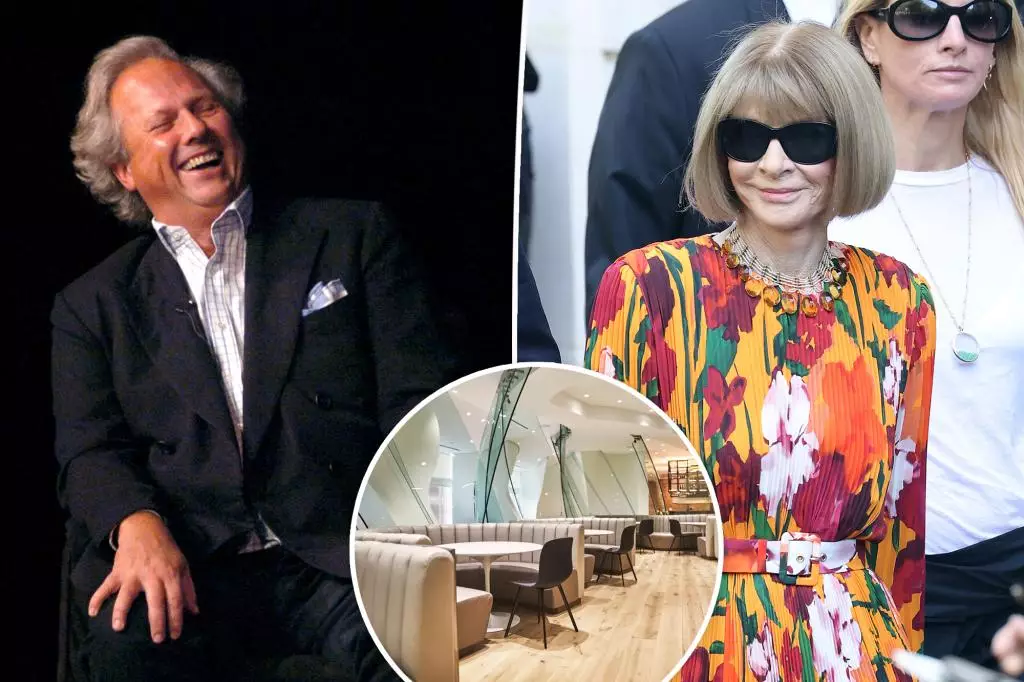In the world of elite media empires, the spaces we create speak volumes about our values, aspirations, and hierarchies. The legendary Condé Nast cafeteria exemplifies this phenomenon—more than just a place to grab a bite, it is a carefully crafted symbol of prestige. The decision to revive this once-iconic space for a book celebration underscores its significance, exposing the deep-rooted belief that environment influences culture. Such decisions reveal that the design and ambiance of even mundane spaces are integral to reinforcing corporate identity and social stratification.
The original Gehry-designed mess hall was more than a luxury; it was an intentional statement. With flowing Venetian glass, striking titanium panels, and luxurious banquettes, the space projected an image of innovation and exclusivity. It was an external manifestation of internal power structures, meant to inspire awe, foster strategic gossip, and bolster the firm’s elite image. This environment reflected a desire not only for productivity but also for a tangible sense of superiority—something that subtly encourages staff to adopt the same high-minded ideals that the space embodied.
Cultural Significance of Design Choices in Corporate Spaces
The aesthetic choices, including distorted mirrors to flatter or slim down those passing by, illustrate how design becomes a tool of influence within corporate culture. These subtle gestures reveal an understanding that appearance—be it physical or organizational—has implications for morale, loyalty, and group identity. The seemingly small details, such as banning garlic or investing millions into avant-garde architecture, convey messages about discipline, exclusivity, and aesthetic consciousness. They demonstrate that the material environment is not superficial but central to shaping perceptions and behaviors within a high-stakes corporate setting.
Furthermore, the cafeteria’s lavishness can be seen as an effort to make the transition more palatable for employees resistant to change. By investing heavily in a space that epitomizes art and sophistication, leadership subtly urges staff to buy into a broader vision of excellence. It becomes a symbolic bridge between comfort and ambition—a reminder that the company’s opulence and innovation are intertwined. The space’s design acts as a conversation starter, a status symbol, and a daily reaffirmation of the organization’s narrative.
The Role of Rituals and Spaces in Cultivating Elite Identity
Reviving the iconic cafeteria signifies more than nostalgia; it signals a conscious effort to reconnect with the brand’s mythos. Rituals around shared spaces—lunches, meetings, spontaneous gossip—shape a collective identity rooted in exclusivity and achievement. Such environments foster insider knowledge and camaraderie that reinforce loyalty to the brand’s cultural ideals.
Ultimately, this focus on space and ritual underscores a broader truth: in the realm of elite media and corporate power, physical environments are strategic tools. They serve as physical embodiments of ideology, crafted meticulously to sustain a unique social order. The cafeteria’s resurrection isn’t merely about nostalgia or aesthetics—it’s about reinforcing the core values of a media dynasty that has long understood the power of seen and unseen symbols in maintaining influence. The lesson is clear: the spaces we curate significantly influence the culture we cultivate, and in the realm of the elite, every detail whispers the message of power.

